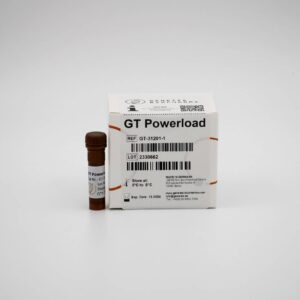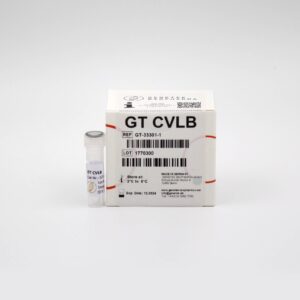GT MaxPure Agarose is a high-quality agarose. It is a general-purpose agarose that has high exclusion limit. GT MaxPure Agarose has high gel strength and is easy to handle at low percentages. It is an ideal agarose for preparative gels and recovery of DNA. Analytical separation is >1,000 base pairs. It is ideal for rapid routine separation of DNA and RNA fragments, as well as PCR products, plasmid preparation, detection, cloning, and transfers.
Premium Features:
- Easy dissolution and fast gelling,
- Excellent transparency and low background staining, which provides clear visibility of bands,
- Sharp, well-defined bands,
- Very low DNA fixation,
- Work well with non-Ethidium Bromide stains line Powerload from Genetek Biopharma GmbH, GelRed, and EvaGreen from other suppliers.
- Rapid staining and de-staining can be performed with minimal background,
- GT Powerload can be added to the DNA, PCR product, etc. instead of in the gel. This makes gel preparation and re-melting an easy procedure. Also, this way less Powerload is used, and it is more convenient.
General information regarding Agarose properties:
Agarose is a linear polysaccharide made of repeating units of agarobiose and is extracted from boiled red algae. It is a neutral charge, low gelling temperature, and the formation of stable gels with large pore sizes makes agarose a good medium for electrophoresis and chromatography. Agarose gels are easy and quick to set up and can separate DNA fragments ranging from about 20 bp to many megabases. Agarose beads are used extensively in column chromatography, particularly in size exclusion and affinity chromatography as well as DNA and RNA analysis.
Melting and gelling temperature:
The energy needed to melt an Agarose gel increases as the gel concentration increases. The gelling temperature of an Agarose gel is also influenced by the gel concentration. For this reason, gelling or re-melting temperatures are expressed at a given agarose concentration. This property is of practical value since it is possible to vary gelling and melting parameters by using lower or higher concentrations of agarose. The dependence of gelling and melting temperatures on concentration is most pronounced at concentrations less than 1%.
When the current is held constant, the samples will migrate at a constant rate. Voltage and wattage will increase as the resistance increases, resulting in an increase in heat generation during the run. If a break occurs in the system such as a damaged lead or electrode or a buffer leak, the resistance of the gel will be greatly increased. This will cause a large increase in wattage and voltage resulting in the generation of excessive heat and distorted DNA, RNA migration on the gel on the sides or overall, in the gel or even melting of the gel. It is even possible for the system to get hot enough to boil or start the apparatus to scorch or burn.
Constant voltage:
When voltage is set constant, current and wattage will decrease as the resistance increases, resulting in a decrease in heat and DNA migration. Since the heat generated will decrease, the margin of safety will increase over the length of the run. If a problem develops and the resistance increases dramatically, the current and wattage will fall since the voltage can’t increase. Even if the apparatus fails, the worst that is likely to happen is that the resistance will increase so much that the power supply will not be able to compensate, and it will shut off.






